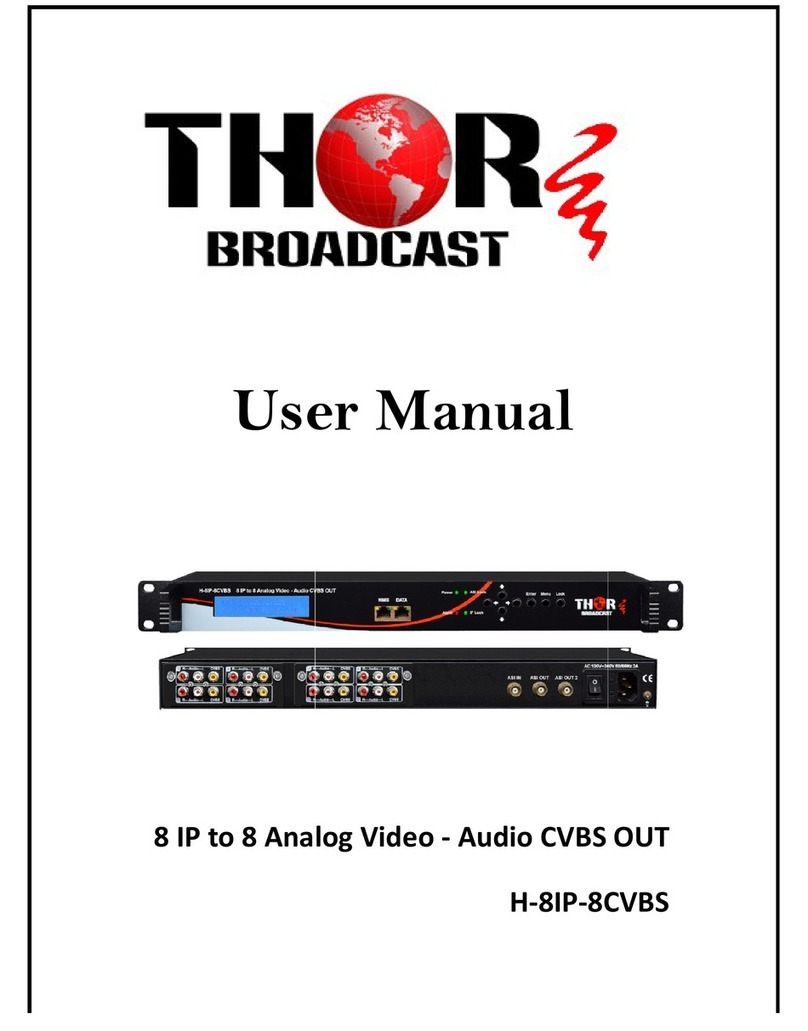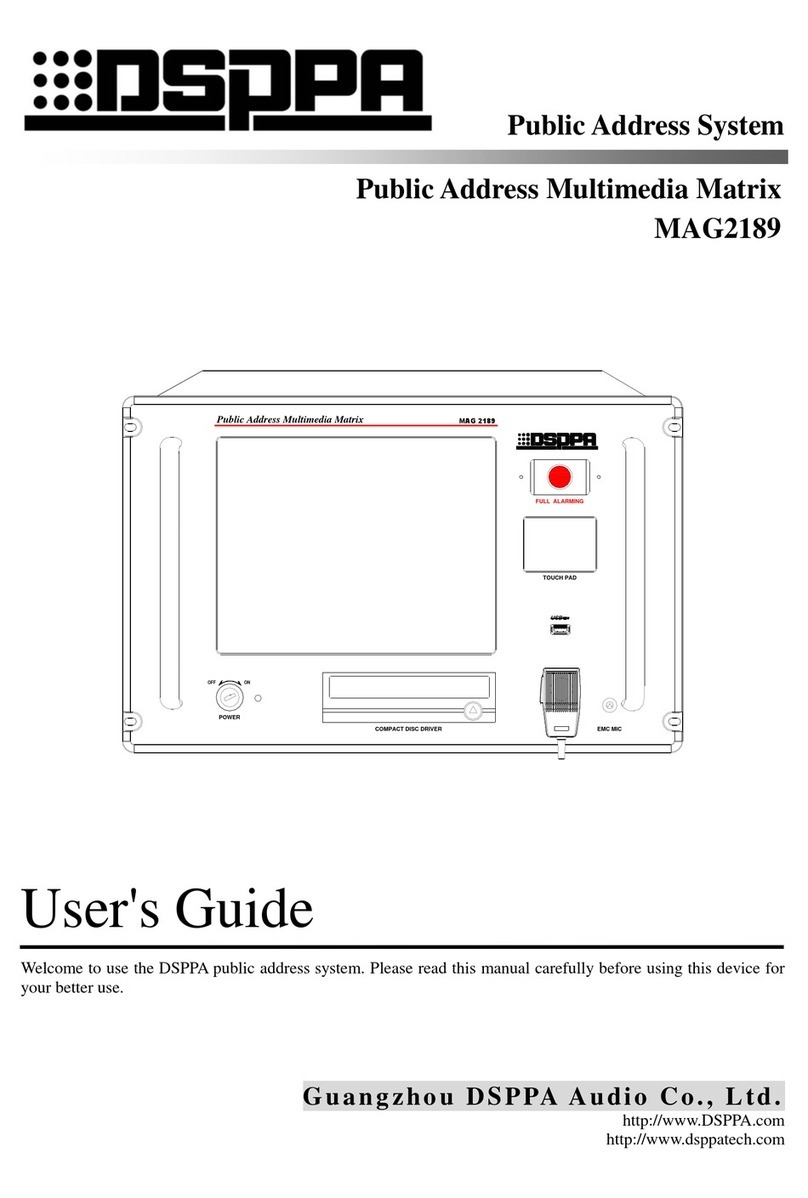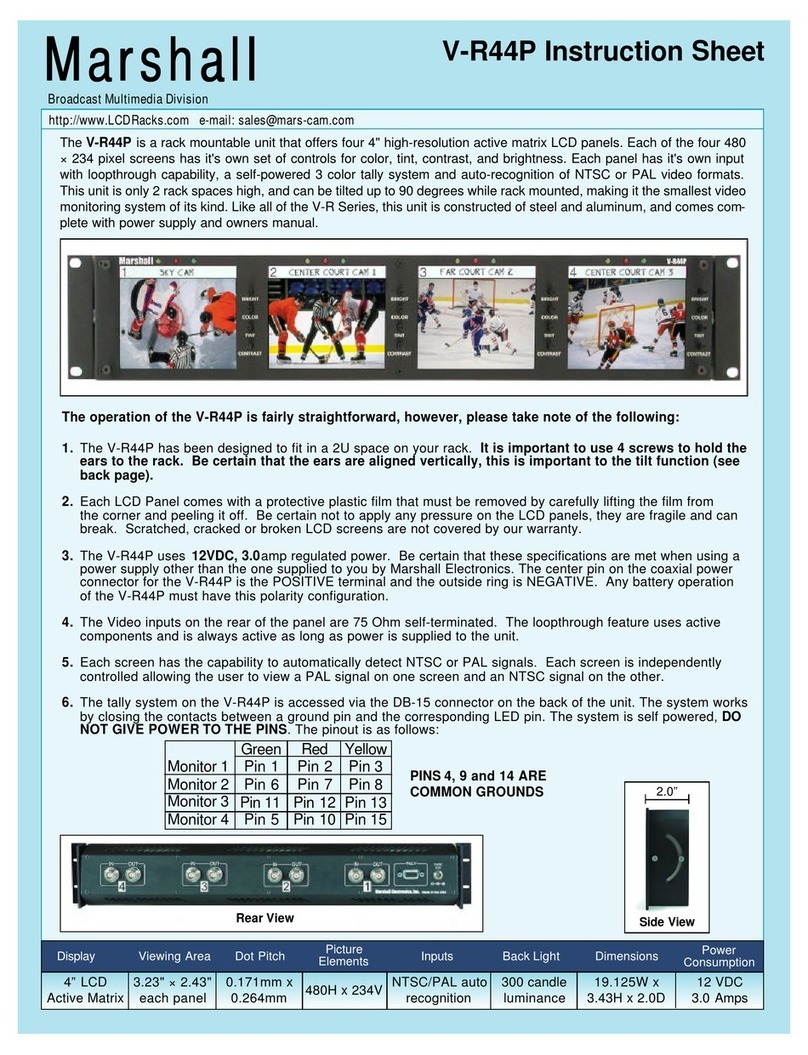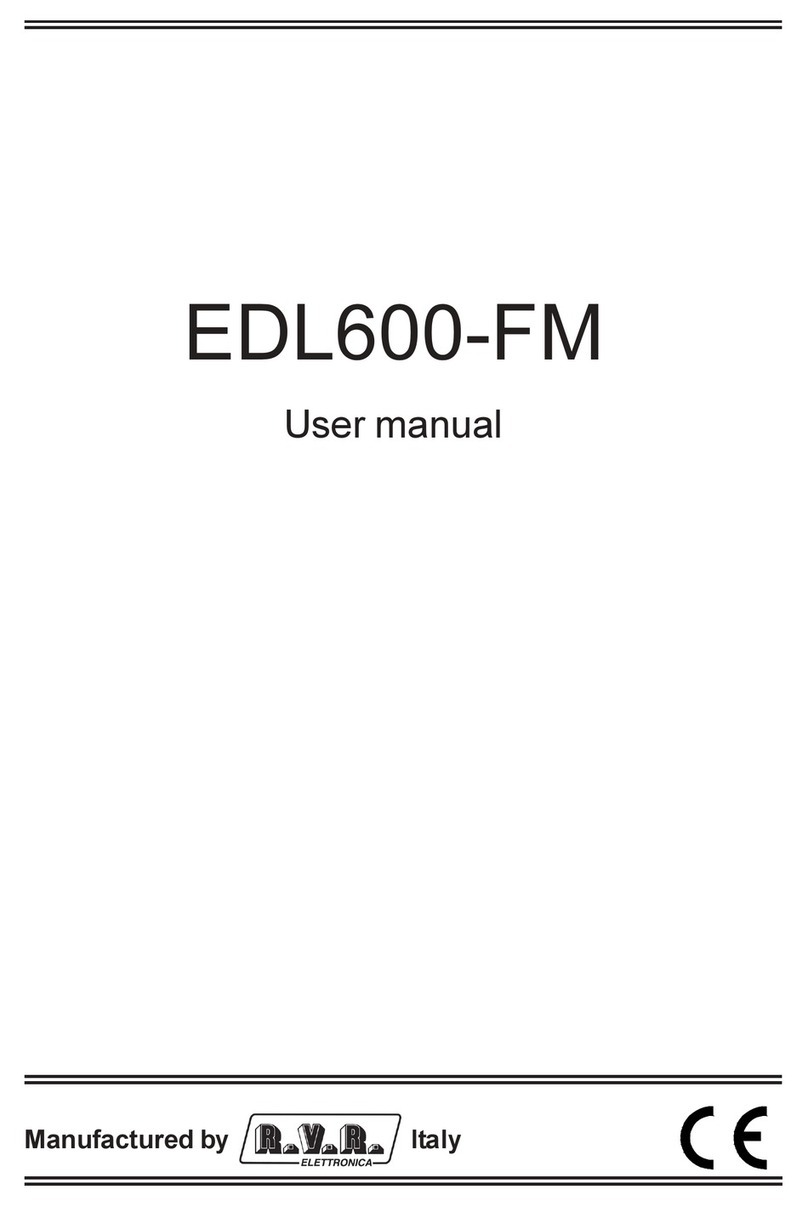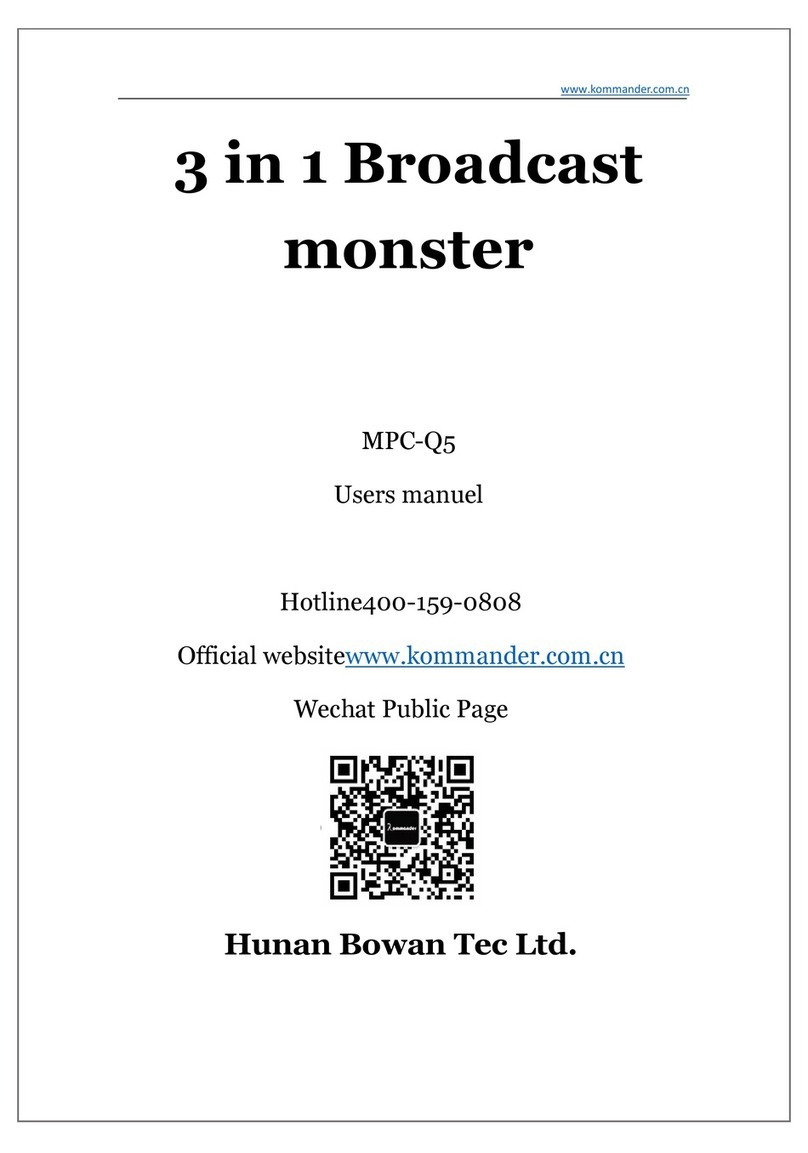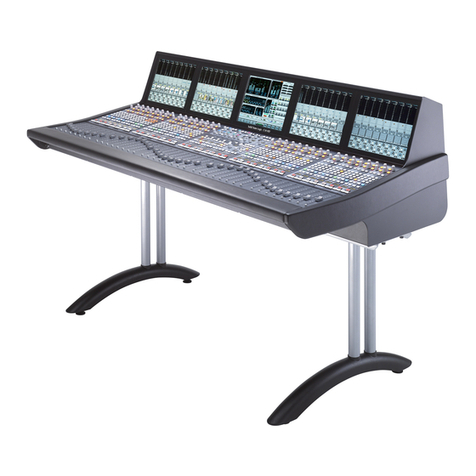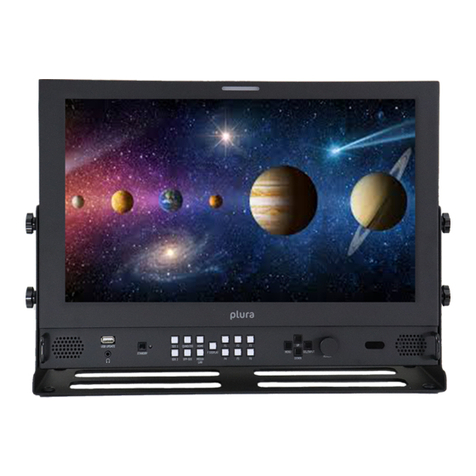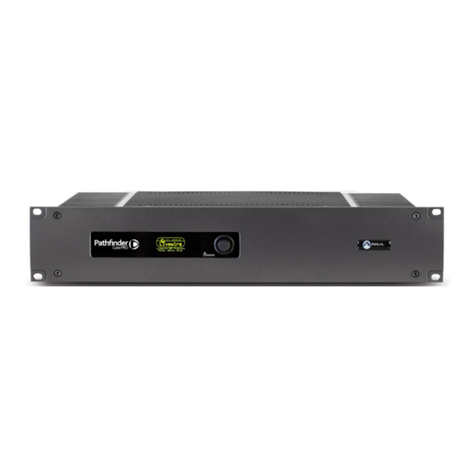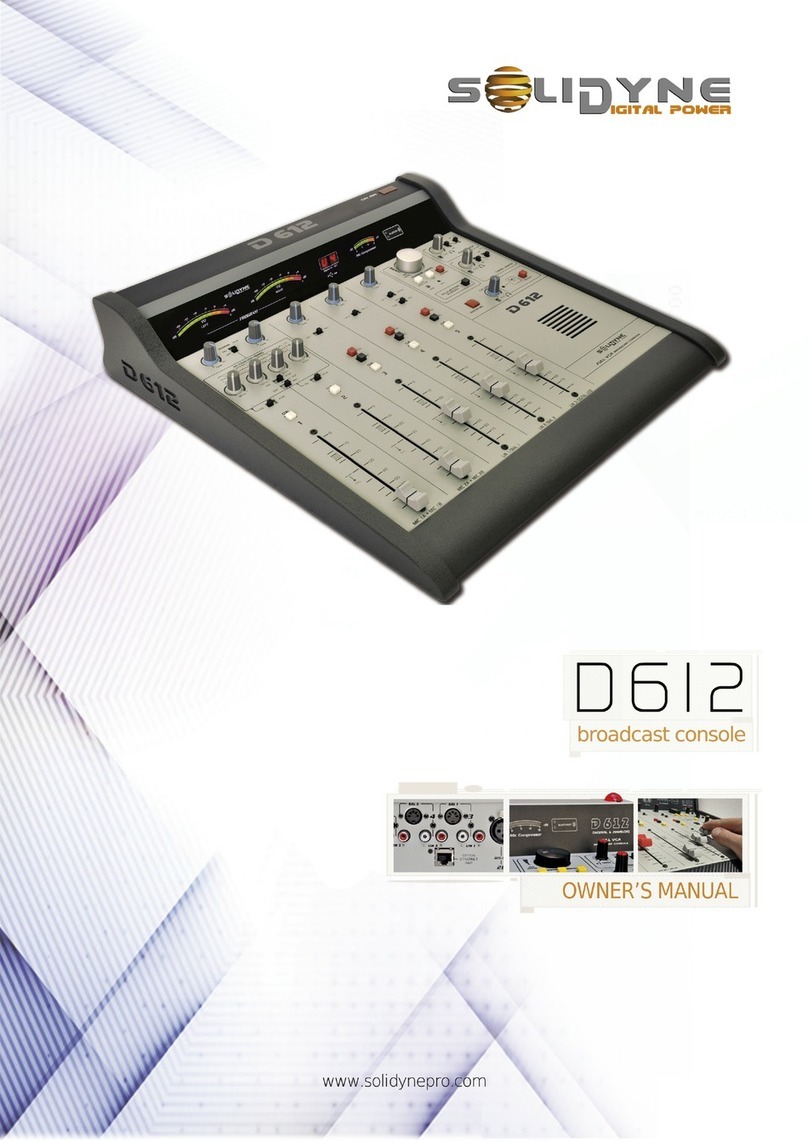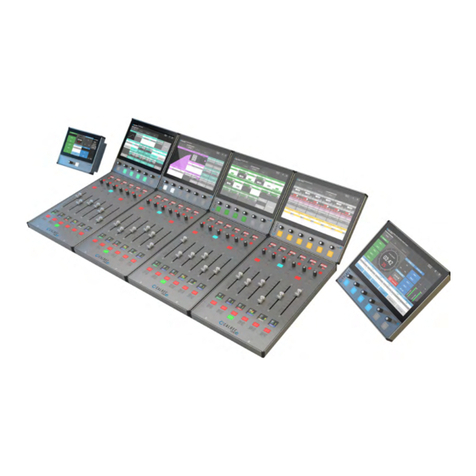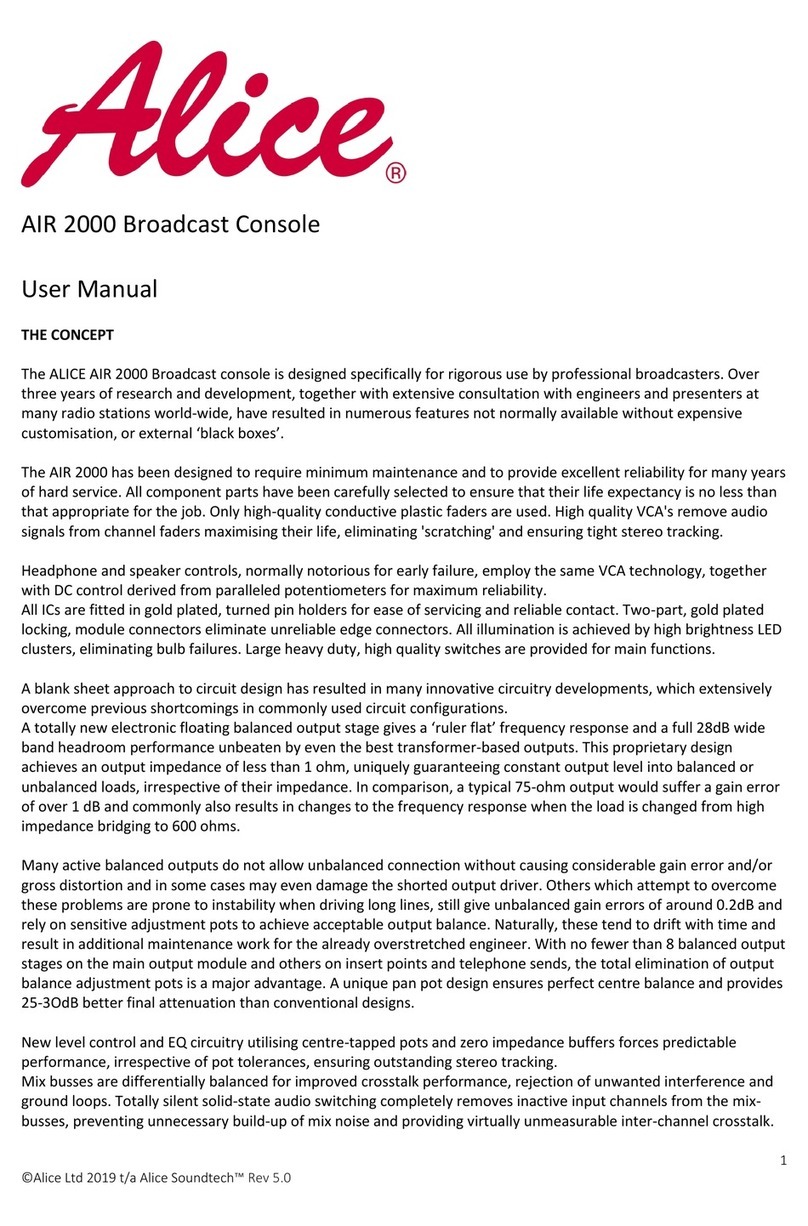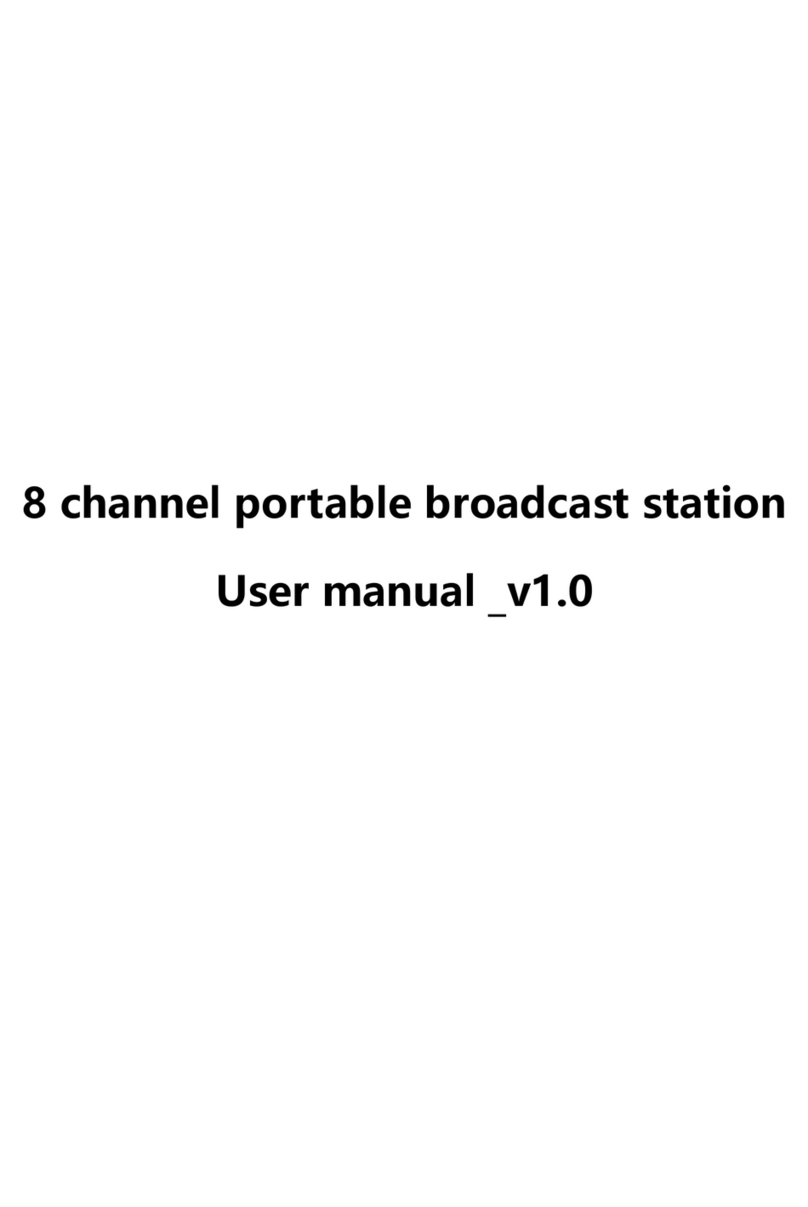
FMHD-1 Operator’s Manual
Page 2FMHD-1
directional coupler in “common-line” facilities, or separate analog and digital RF samples in “separate-
line” facilities.
The FMHD-1 provides high-accuracy modulation indications of conventional FM Stereo composite
signals present on the analog FM carrier of hybrid IBOC broadcasts. Peak analog modulation indications
of Total, Pilot, Left, Right, L+R, and L–R are presented both in bargraphs and in numerical readouts.
Average and minimum values appear in bargraphs. Simultaneously, the FMHD-1 decodes and meters the
audio levels of the Main HD program, providing both bargraph and numerical indications. By user
selection, the HD decoder may be set to provide the audio and program level readings of any other digital
audio program present on the station data stream. Supplemental HD decoder modules may be installed to
provide simultaneous aural monitoring of up to four HD channels, if present in the data stream.1
As a monitor of FM hybrid IBOC transmissions, the FMHD-1 provides visual indicators for time
alignment and amplitude agreement of the analog and Main HD programs, as well as an “audio in-phase”
indication, to help operators maintain smooth analog-digital blends in receivers. The presence or absence
of all eight possible digital audio programs is indicated on the main tuning screen. HD transmission
status indications include signal presence, program data acquisition, station information recovery, service
mode, received signal-to-noise power, two quality metrics, and the data and audio acquisition times. A
second screen presents data specific to the tuned station; a third presents the program information carried
on the data stream for listeners.
All readings are presented on a single 640 X 240 pixel LCD display centered on the front panel.
The FMHD-1 provides audio outputs for all stereo program channels. The outputs are available in both
analog and digital form. There are eight user-configurable outputs in analog format. These are
low-distortion, low-noise outputs suitable for driving high-quality audio monitoring equipment via long,
terminated lines. Any of the audio signals may also be monitored via a front-panel headphone jack. There
are six digital user-configurable AES-3ID outputs. The recovered analog FM stereo composite signal is
available in both analog and digital form. Four digital composite filters minimize the effects of
interference on the composite signal caused by IBOC carriers. The filtered composite signals may be
used to drive conventional FM monitors. The down-converted analog FM I and Q signals are provided
only in digital form.
Internal processing in the FMHD-1 provides spectrum analysis of the hybrid IBOC FM RF carrier-set.
Special computations provide numerical readouts of the lower, upper, and total sideband power ratios in
dBc. User-selectable calibration signals conveniently verify proper operation of the analog FM metering
circuitry and other monitors fed by the FMHD-1 FM composite outputs. Four user-selectable test signals
are provided for testing audio systems connected to the unit.
Configurable alarms with adjustable thresholds are available for twenty-two FMHD-1 measurement
parameters. User-selectable external alarm indications include email messages and relay-contact closures.
The FMHD-1 may be operated as an addressed Internet device. Remote operation and interrogation of the
FMHD-1 by a PC is also possible via either the rear-panel RS-232 connector or RJ-45 Ethernet port using
the included Belar WizWin© software. Firmware updates for the FMHD-1 and its internal Lantronix
1Every FMHD-1 is provided with at least one HD Radio™ digital audio program decoder. Purchasing a second
HD decoder allows simultaneous audio program recovery of two HD programs. The second decoder is simply
inserted in an open card-edge connector. Addition of either a third or a third and fourth encoder requires the
purchase of one FMHD-1 expander card in addition to the additional HD decoder cards.
